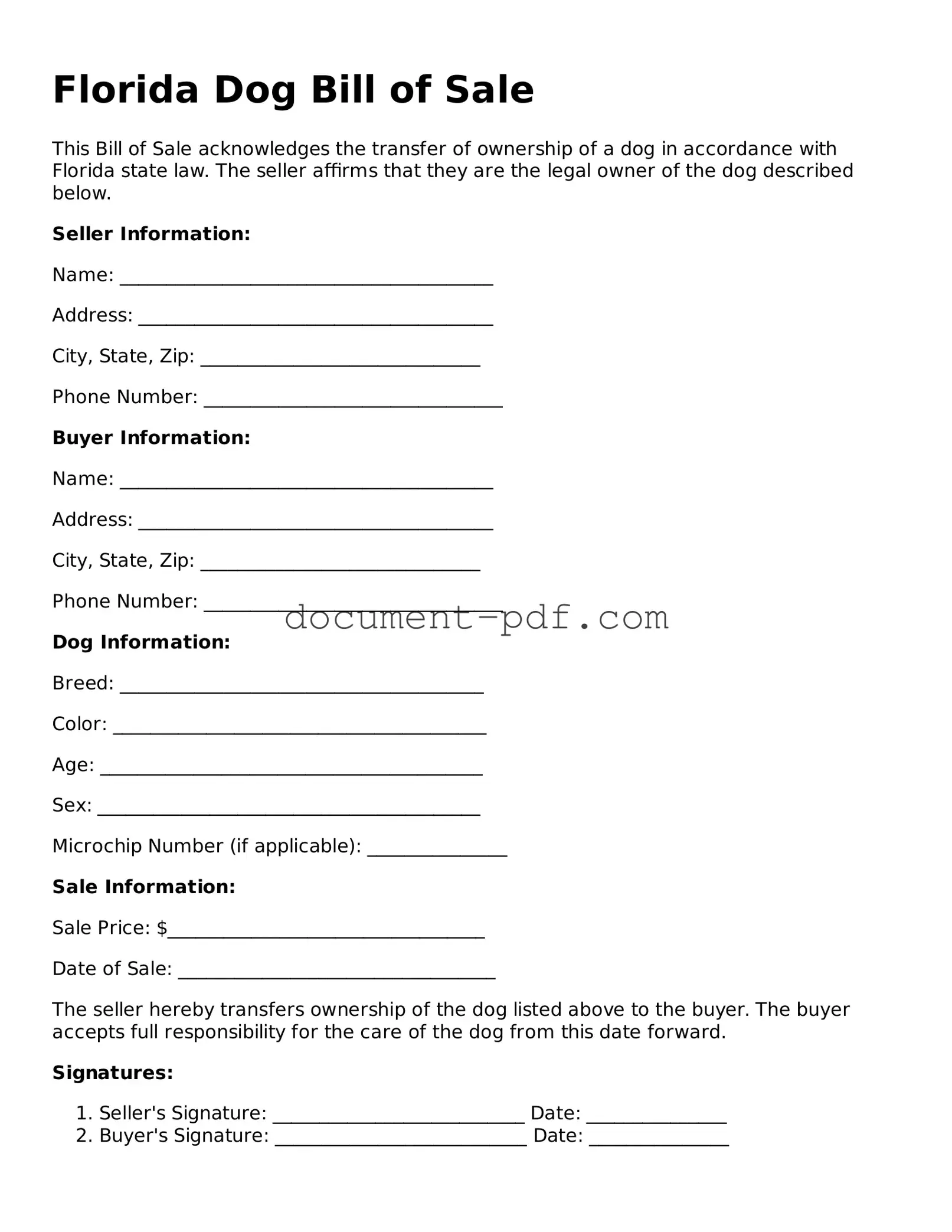Florida Dog Bill of Sale
This Bill of Sale acknowledges the transfer of ownership of a dog in accordance with Florida state law. The seller affirms that they are the legal owner of the dog described below.
Seller Information:
Name: ________________________________________
Address: ______________________________________
City, State, Zip: ______________________________
Phone Number: ________________________________
Buyer Information:
Name: ________________________________________
Address: ______________________________________
City, State, Zip: ______________________________
Phone Number: ________________________________
Dog Information:
Breed: _______________________________________
Color: ________________________________________
Age: _________________________________________
Sex: _________________________________________
Microchip Number (if applicable): _______________
Sale Information:
Sale Price: $__________________________________
Date of Sale: __________________________________
The seller hereby transfers ownership of the dog listed above to the buyer. The buyer accepts full responsibility for the care of the dog from this date forward.
Signatures:
- Seller's Signature: ___________________________ Date: _______________
- Buyer's Signature: ___________________________ Date: _______________
Both parties acknowledge that this Bill of Sale represents the entire agreement regarding the sale of the dog and supersedes all previous discussions and agreements.
This document is governed by the laws of the state of Florida.
